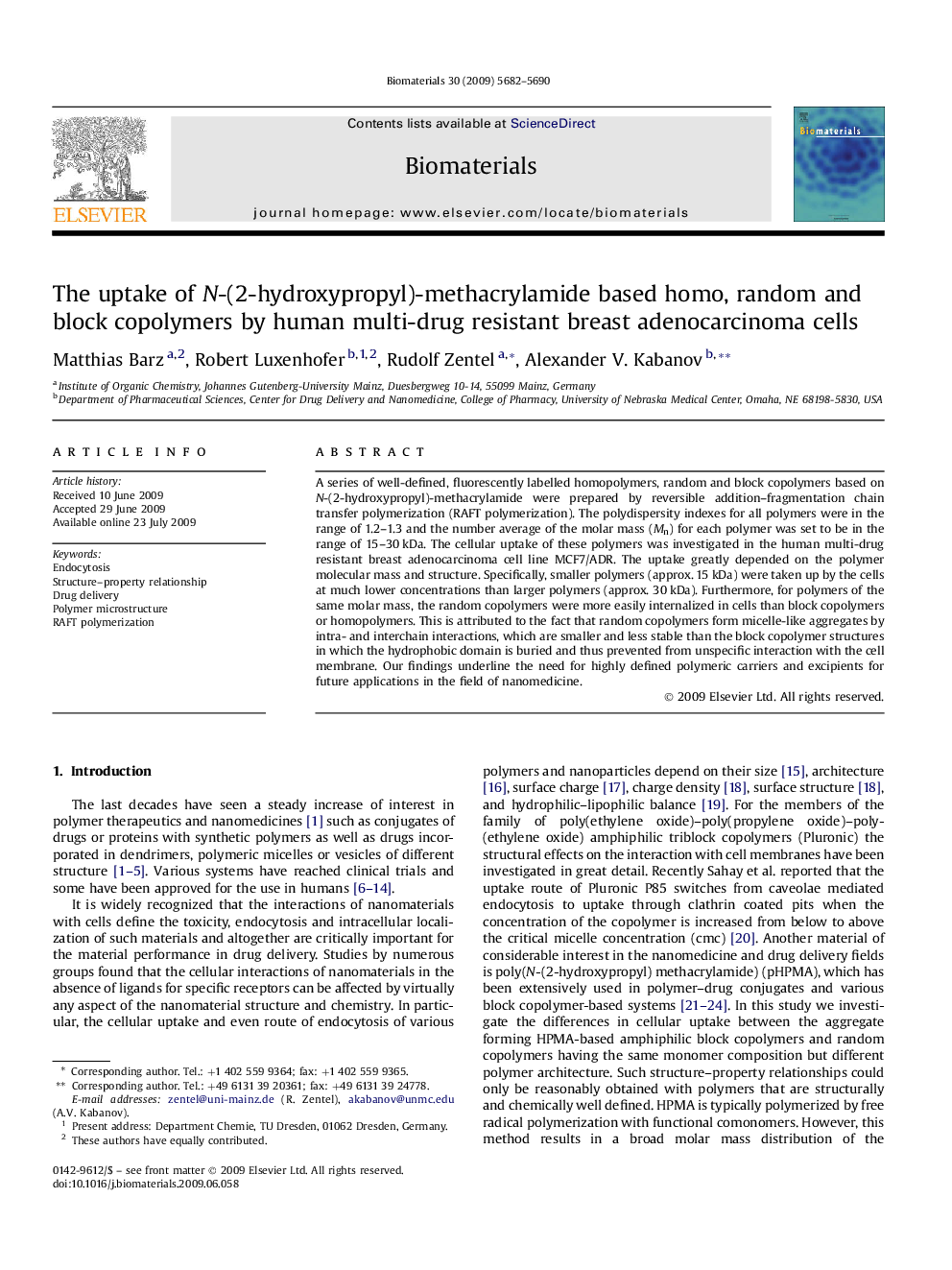| کد مقاله | کد نشریه | سال انتشار | مقاله انگلیسی | نسخه تمام متن |
|---|---|---|---|---|
| 8938 | 610 | 2009 | 9 صفحه PDF | دانلود رایگان |

A series of well-defined, fluorescently labelled homopolymers, random and block copolymers based on N-(2-hydroxypropyl)-methacrylamide were prepared by reversible addition–fragmentation chain transfer polymerization (RAFT polymerization). The polydispersity indexes for all polymers were in the range of 1.2–1.3 and the number average of the molar mass (Mn) for each polymer was set to be in the range of 15–30 kDa. The cellular uptake of these polymers was investigated in the human multi-drug resistant breast adenocarcinoma cell line MCF7/ADR. The uptake greatly depended on the polymer molecular mass and structure. Specifically, smaller polymers (approx. 15 kDa) were taken up by the cells at much lower concentrations than larger polymers (approx. 30 kDa). Furthermore, for polymers of the same molar mass, the random copolymers were more easily internalized in cells than block copolymers or homopolymers. This is attributed to the fact that random copolymers form micelle-like aggregates by intra- and interchain interactions, which are smaller and less stable than the block copolymer structures in which the hydrophobic domain is buried and thus prevented from unspecific interaction with the cell membrane. Our findings underline the need for highly defined polymeric carriers and excipients for future applications in the field of nanomedicine.
Journal: Biomaterials - Volume 30, Issue 29, October 2009, Pages 5682–5690